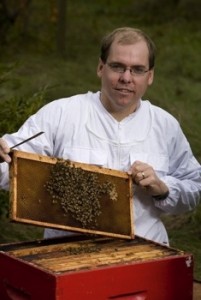
Getting their buzz back
By Food in Canada staff
Business Operations Research & DevelopmentNew project to help protect and revitalize bee populations; the insect critical to North America’s agriculture industry
Vancouver – What insect contributes $2.5 billion to Canada’s agriculture industry and another $15 billion to the agriculture industry in the U.S.?
It’s the humble honey bee.
So as widespread diseases are decimating bee colonies across North America, research teams are stepping up their efforts to combat them.
Genome BC, Genome Canada and other groups are funding a revolutionary project aimed at producing tools for beekeepers that will help them to raise healthier bees and more of them.
Major pollinators, losses
Genome BC says honey bees play a major role in agriculture as pollinators of many vegetable, nut and fruit crops. For B.C.’s premium crops of blueberries, raspberries and cranberries there have been incalculable losses from the collapse of honey bee colonies.
One solution is Dr. Leonard Foster’s $5.7-million project, Next generation integrated pest management tools for beekeeping.
Neat freaks
Foster’s project involves developing tools to help beekeepers breed more resilient bees.
Genome BC says there are many social behaviours that help bees to resist disease, such as hygienic behaviour.
If the hives are cleaner, they’re better able to suppress the spread of some diseases.
Foster’s work involves detecting and analyzing naturally occurring proteins and gene traits in the more hygienic bees and introducing these into breeding programs.
Novel bee virus treatment
In addition to protein analysis, Foster is developing a new approach to treating the viruses that affect honeybees using RNAi (the biological system that controls which genes are turned on and off) to develop a treatment that is specific to this organism.
The method is expected to have no detrimental side effects and there is no way the bees can develop a resistance to it.
Loss
Foster says in the past year there was another drop in the honey bee population by approximately 30 per cent in Canada and the U.S.
The level of loss has been consistent over the past five years in both countries.
Factors contributing to the annual losses are:
• various bacteria
• viruses
• fungi
• mites
Beekeepers have tried chemical pesticides, but the culprits have evolved and are now able to resist them.
The tools being developing in these recent projects are expected to be less susceptible to revolutionary resistance and their development time should be less than traditional pesticides.
Print this page
